
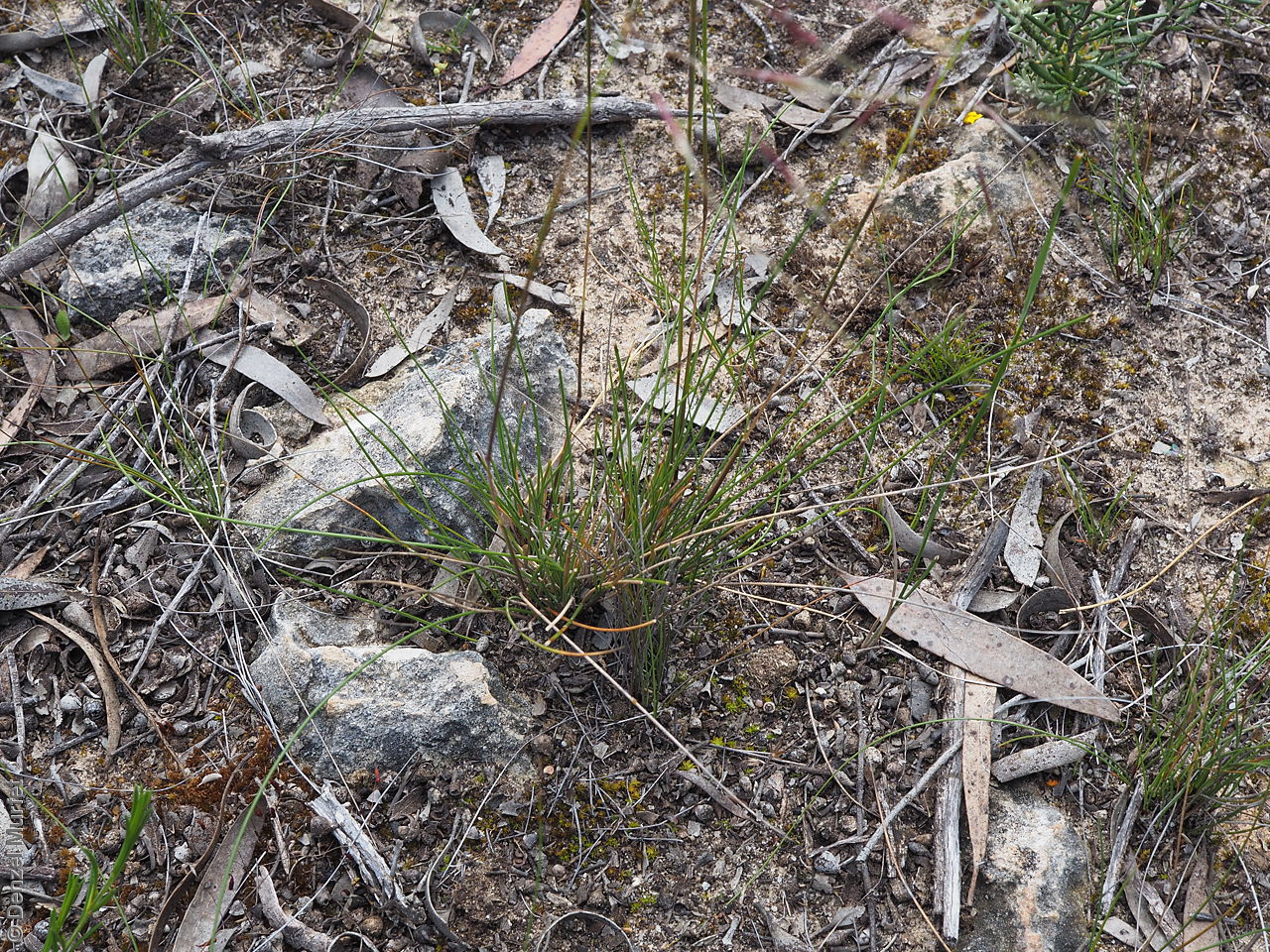
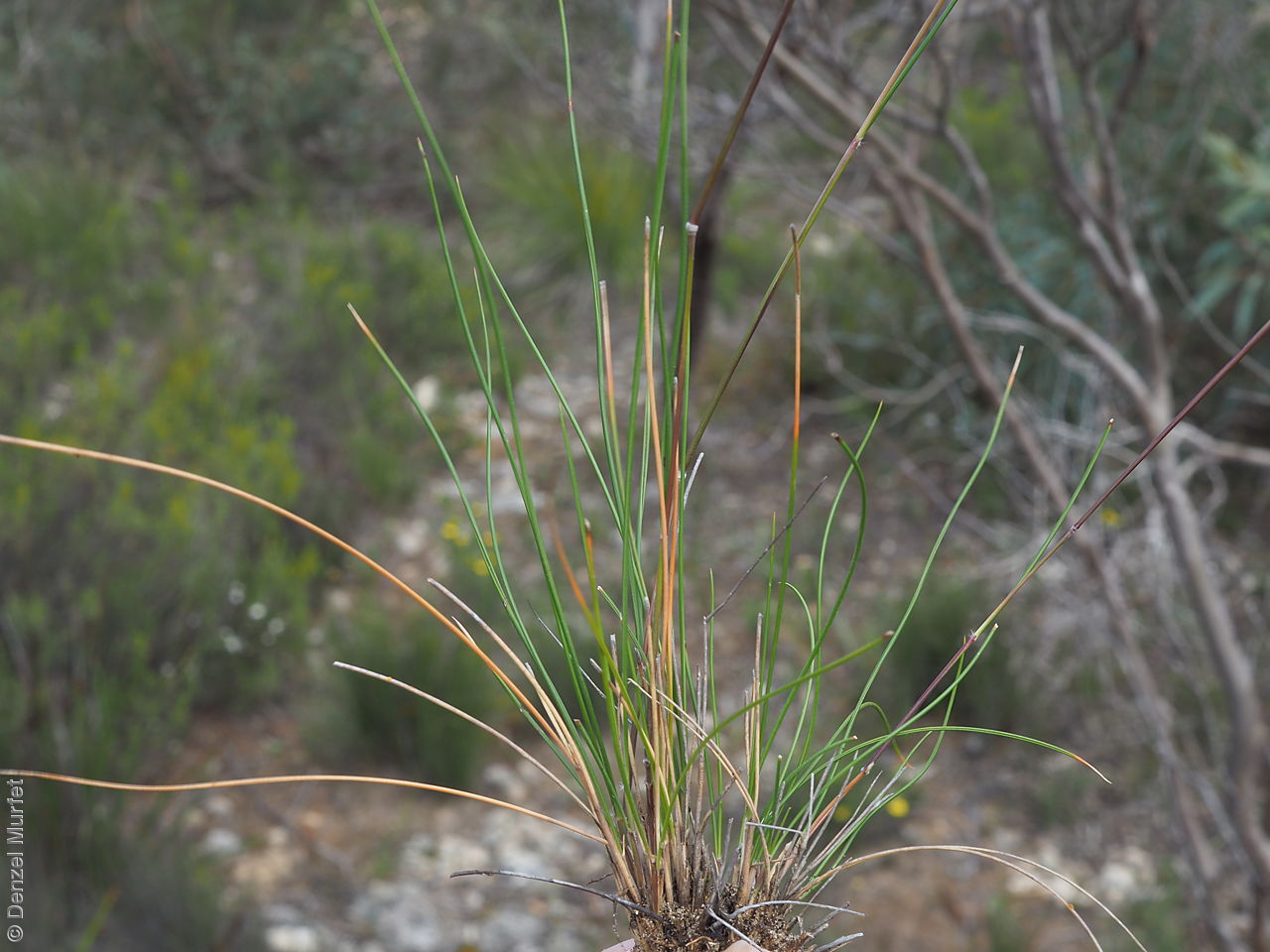
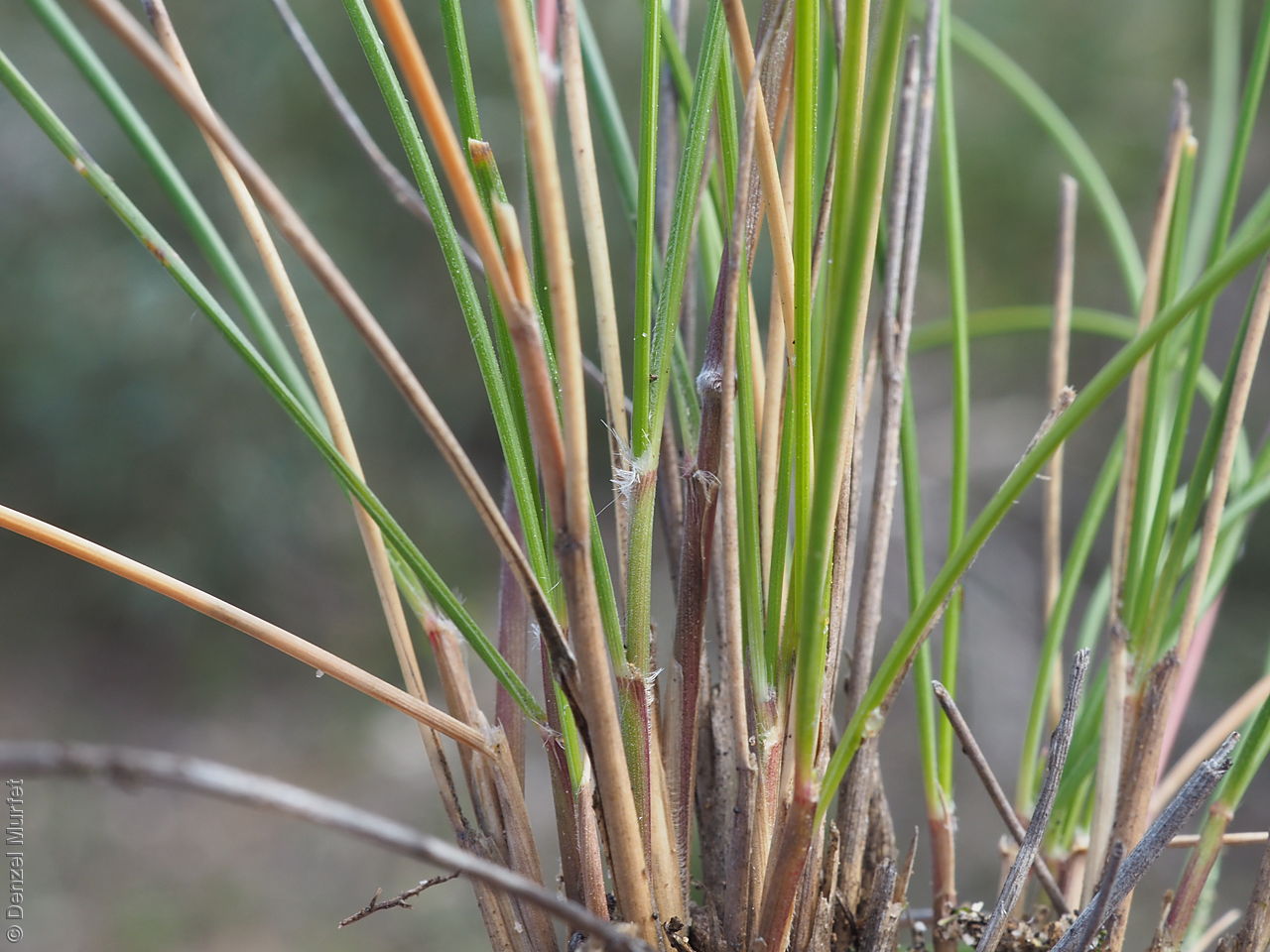
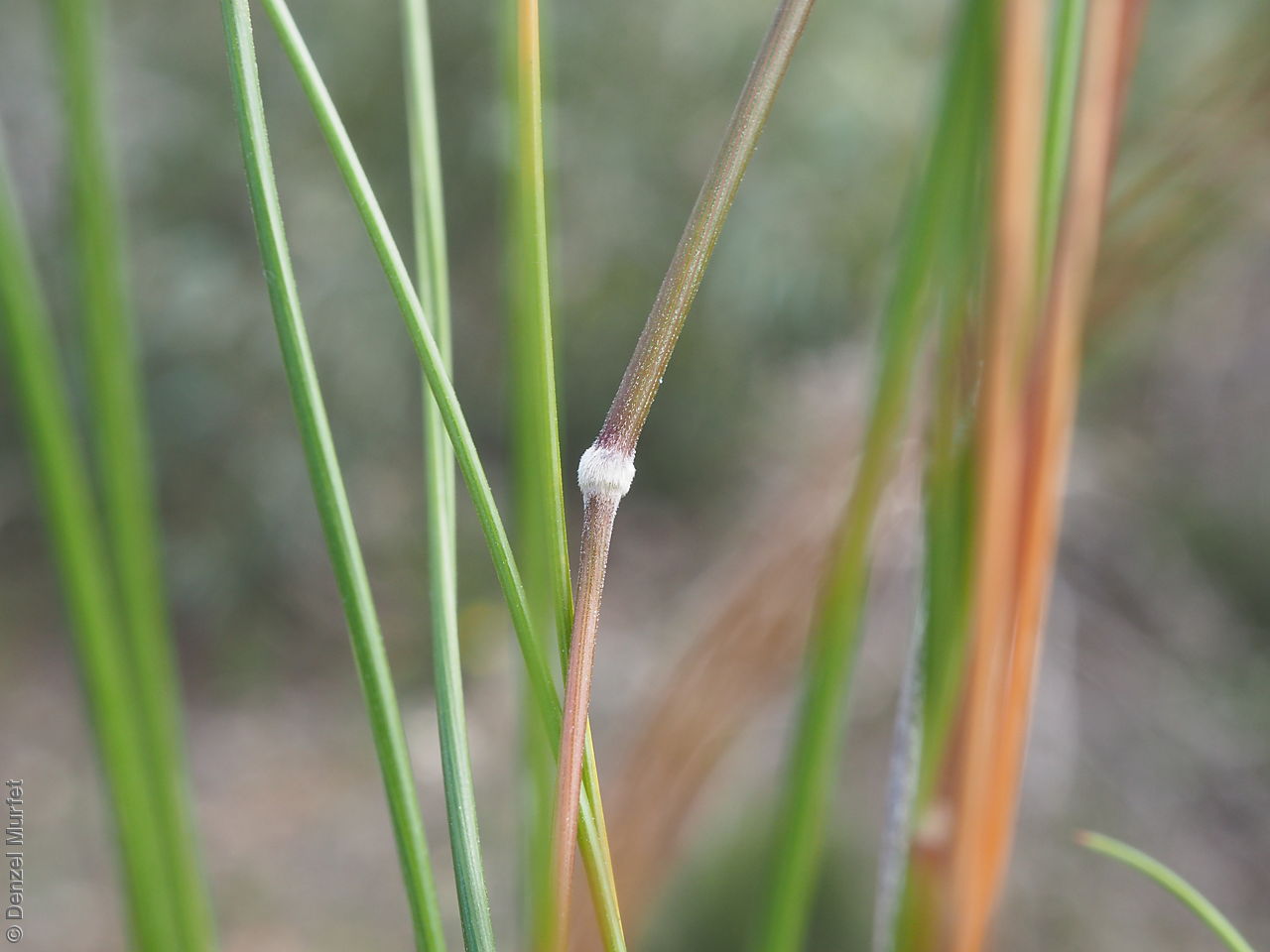
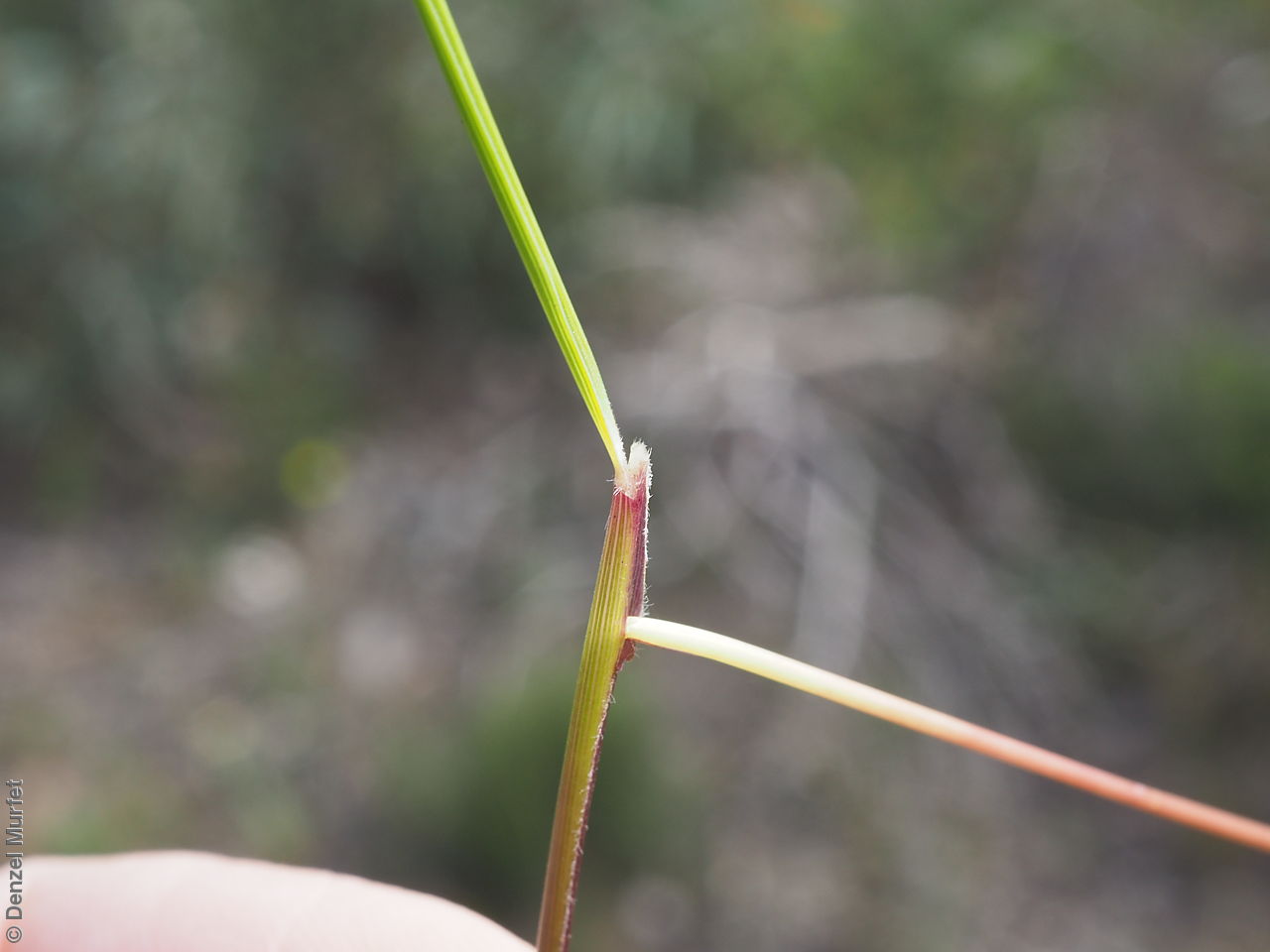
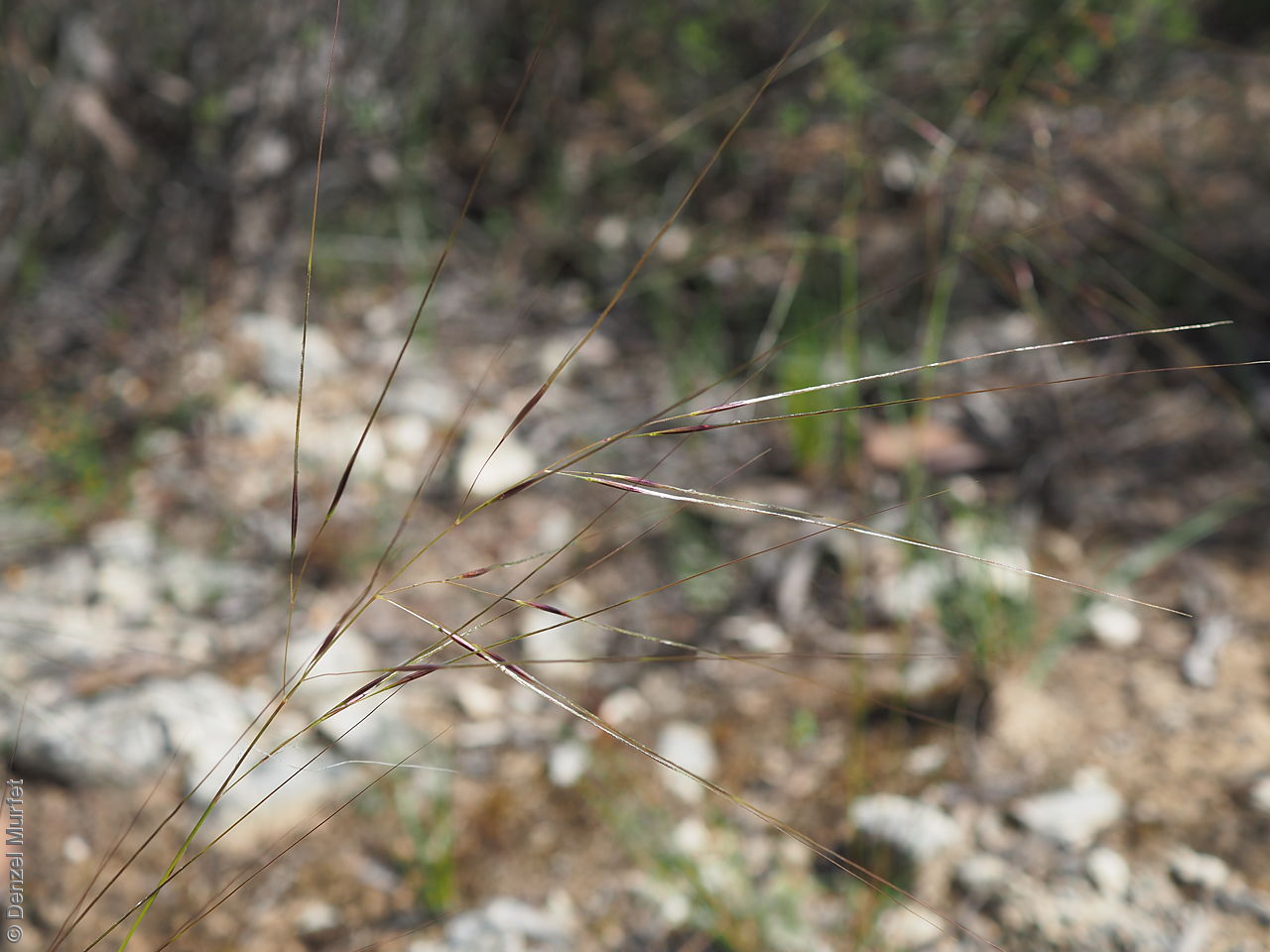
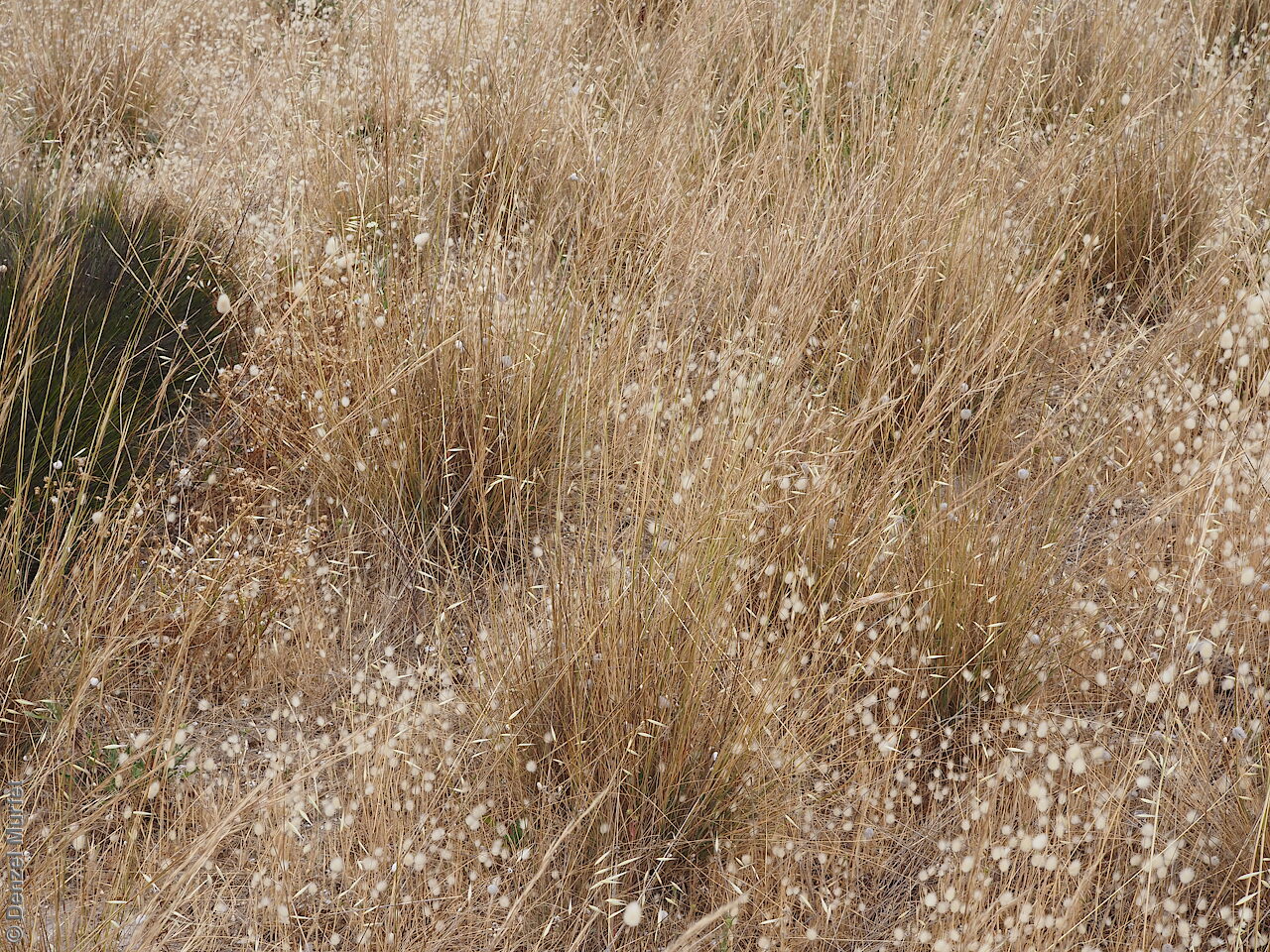

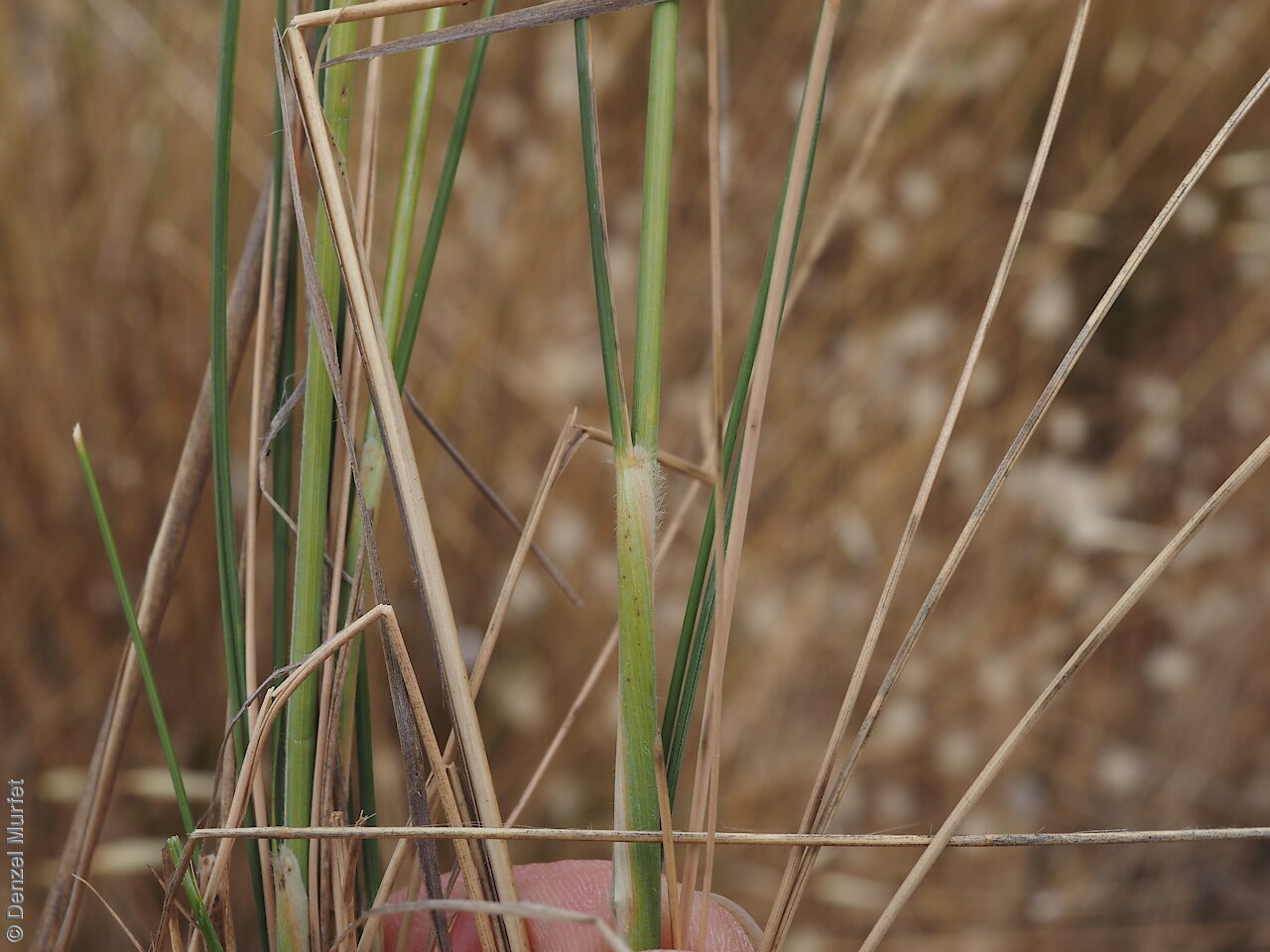
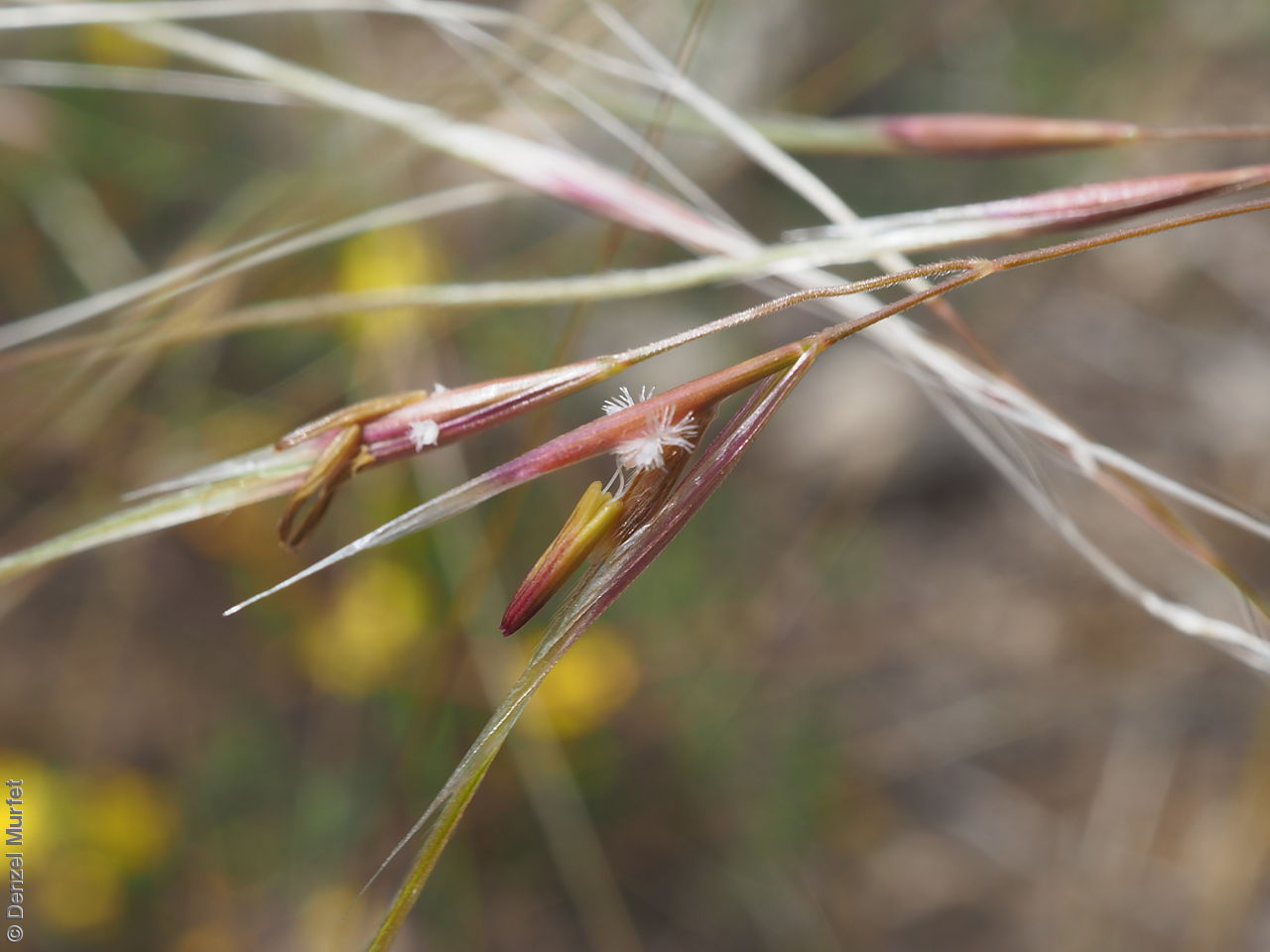
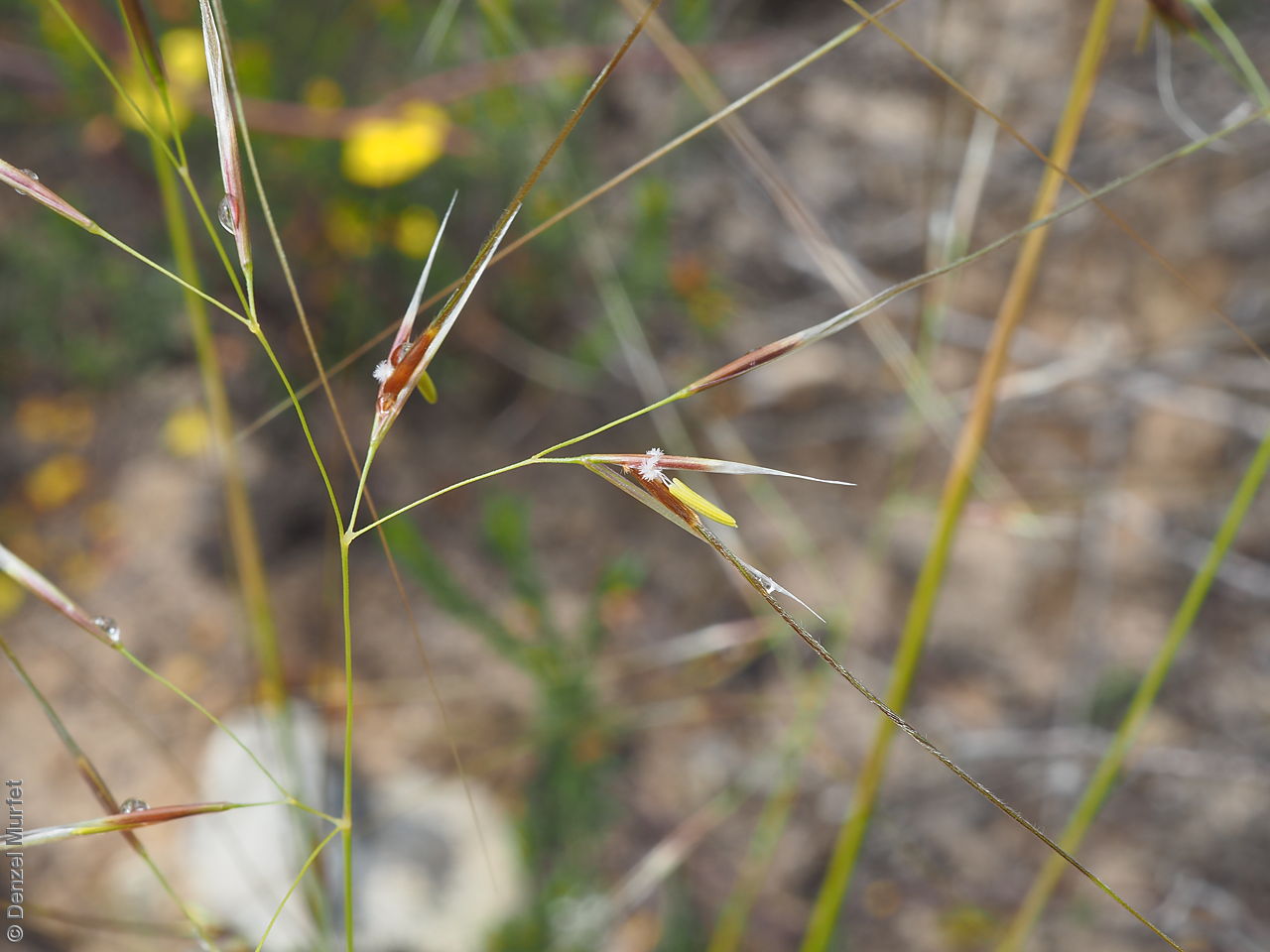
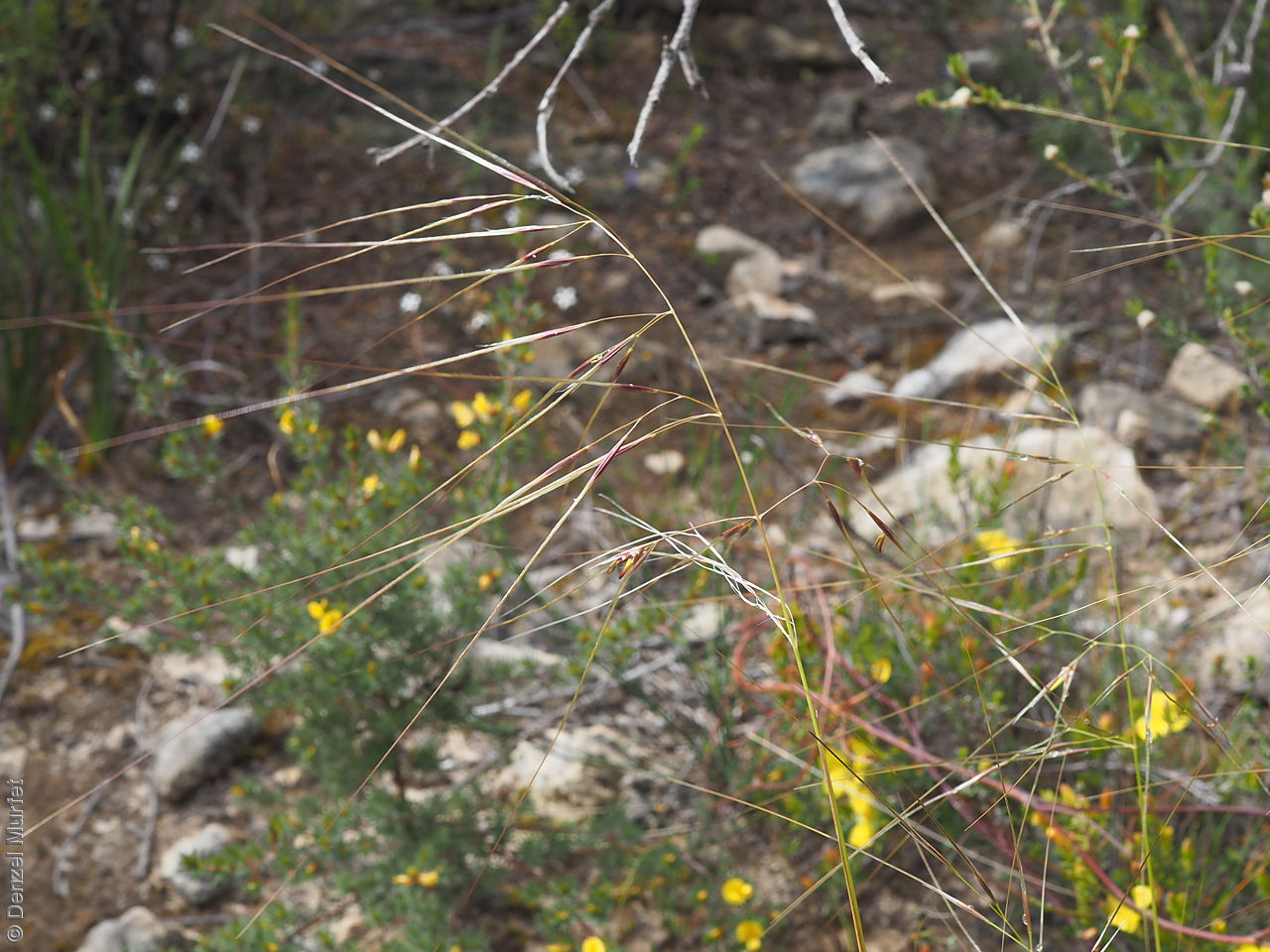
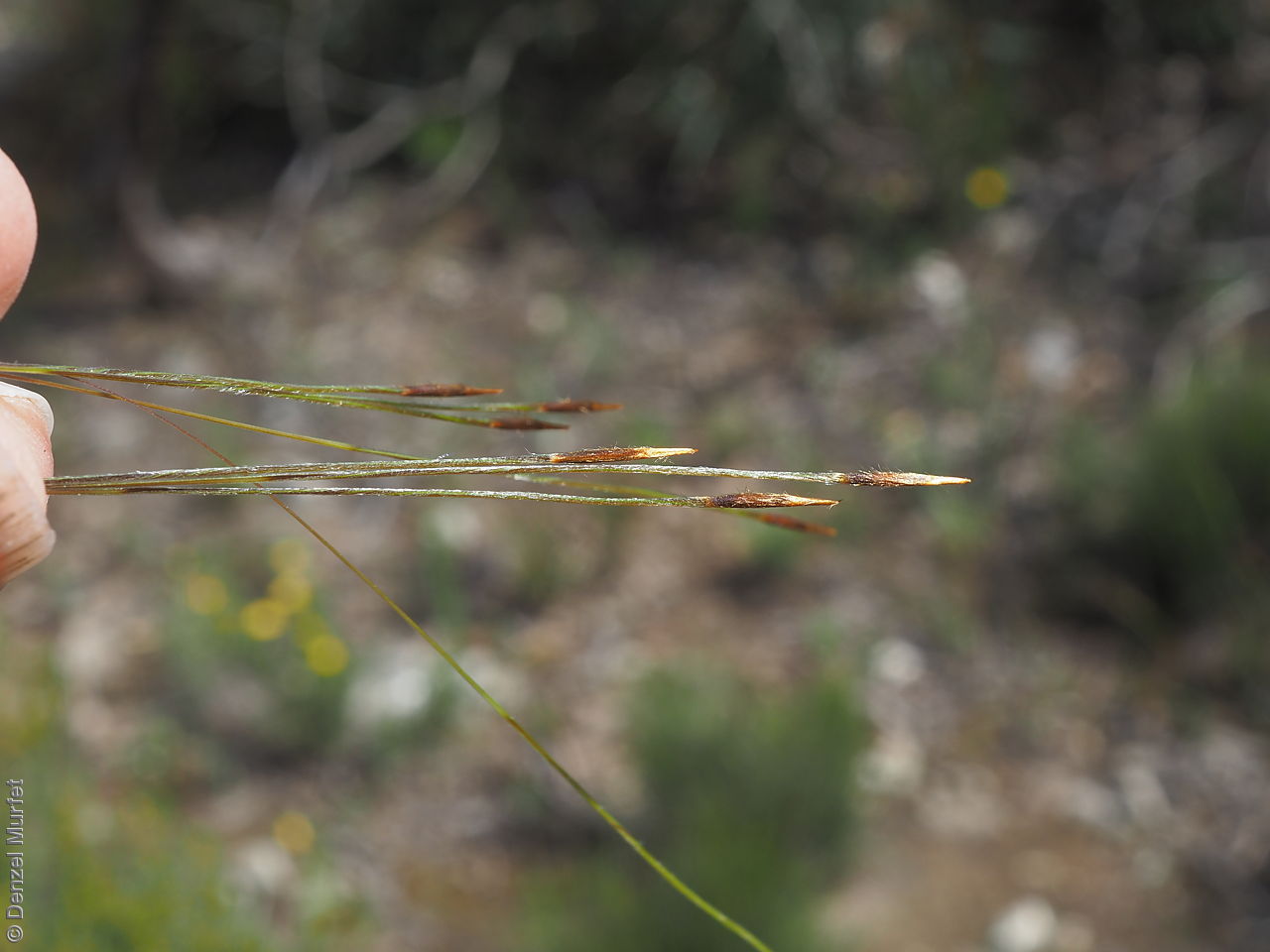
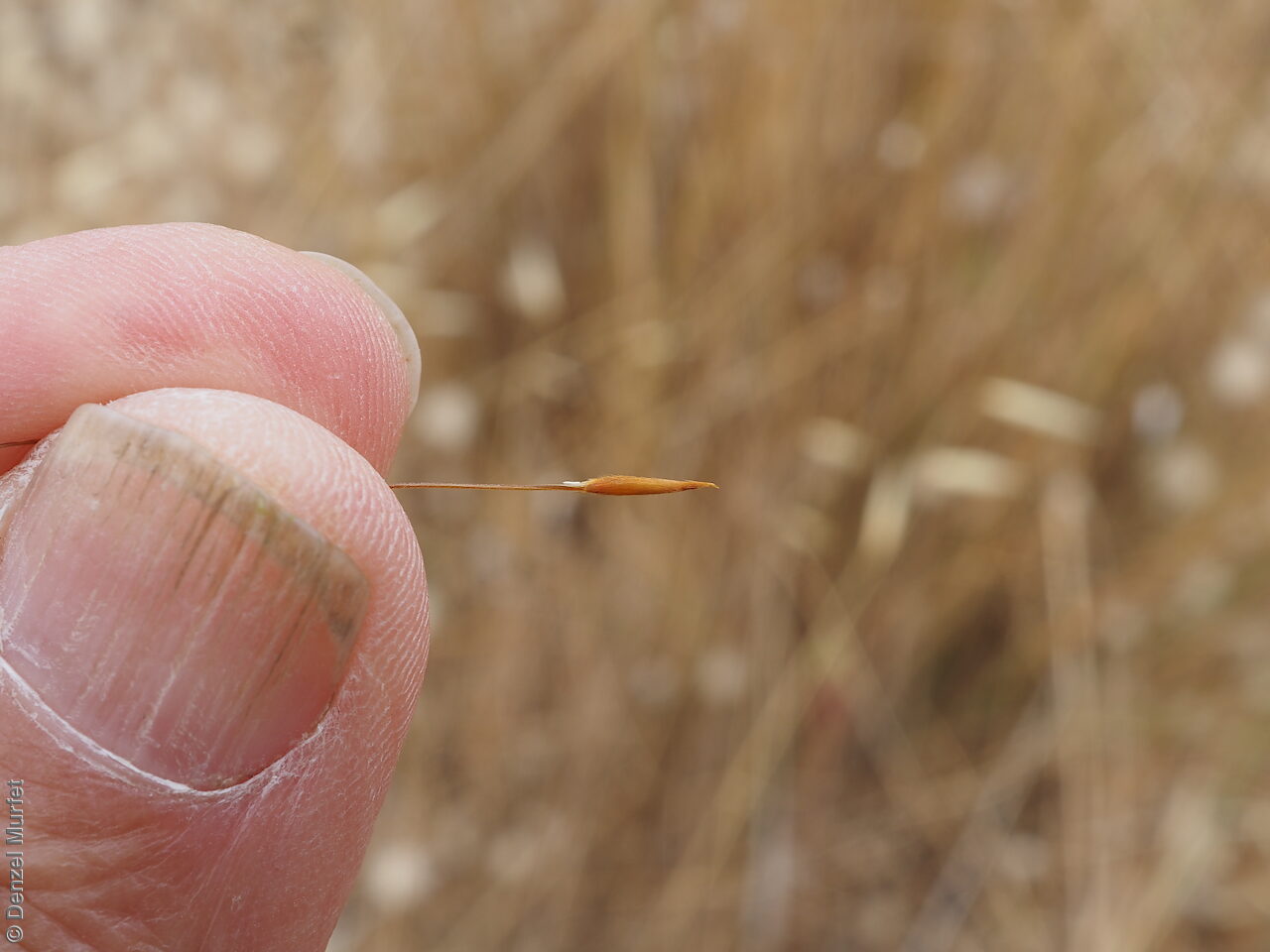
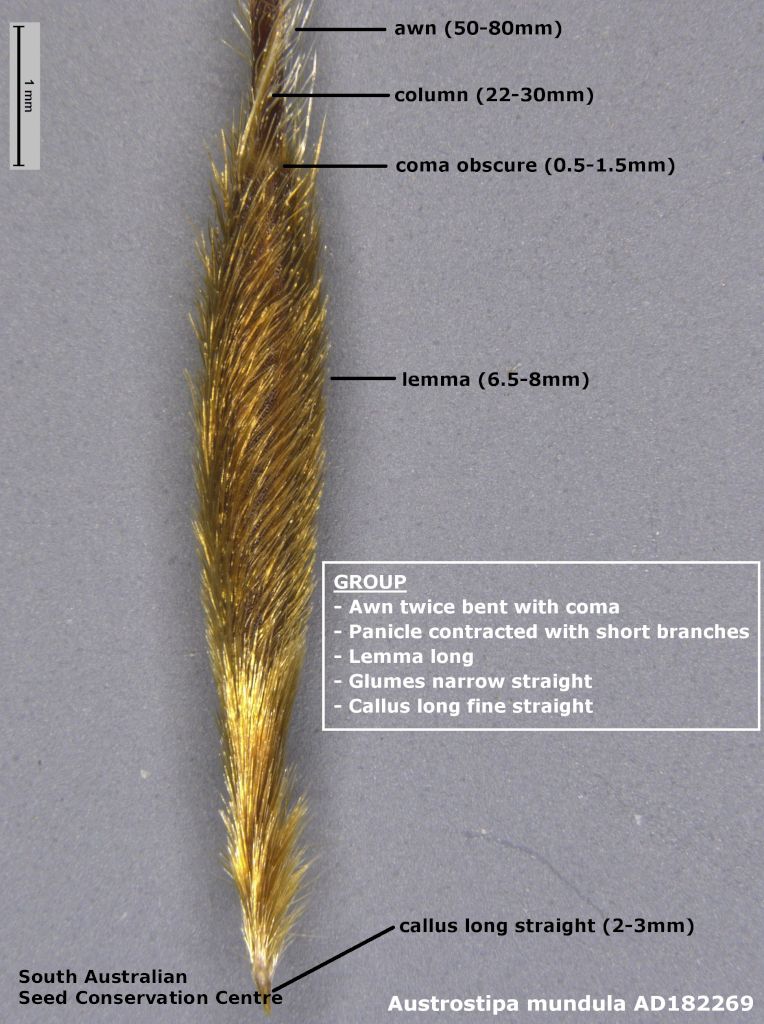
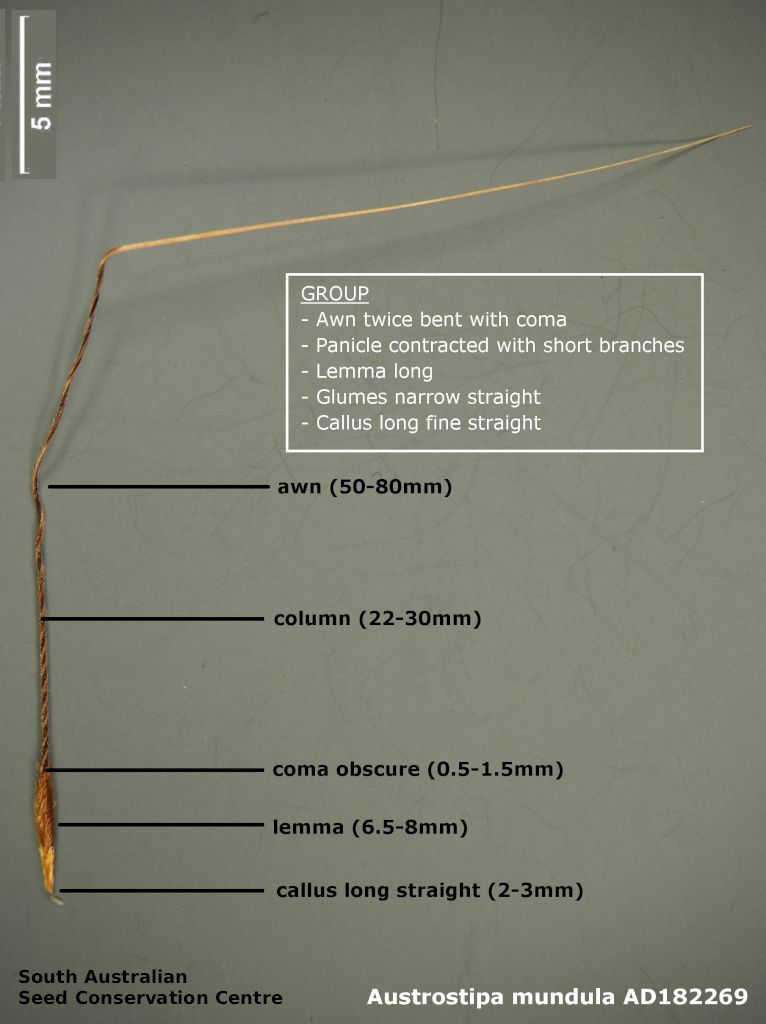


Botanical art
Prior names
Stipa mundula
Etymology
Austrostipa from the Latin 'auster' meaning south and the genus Stipa, referring to the genus being allied to Stipa but restricted to Australia. Mundula from the Latin 'mundus' meaning elegant, alluding to its attractive appearance.
Distribution and status
Found in the southern part of South Australia, from the Eyre Peninsula to the lower South-east except on Kangaroo Island growing on sandy to clay loams and limestone in grassland, heathland, shrubland and mallee. Also found in Western Australia and Victoria. Native. Common in South Australia. Rare in Western Australia and Victoria.
Herbarium regions: Eyre Peninsula, Northern Lofty, Murray, Yorke Peninsula, Southern Lofty, South Eastern, Green Adelaide
NRM regions: Adelaide and Mount Lofty Ranges, Eyre Peninsula, Northern and Yorke, South Australian Murray-Darling Basin, South East
AVH map: SA distribution map (external link)
Plant description
Tufted perennial grass to 65 cm high, with slender unbranched culm and pubescent nodes. Leaves smooth; sheath often purplish, with blade rigidly erect sturdy, tightly involute, to 20 cm long and less than 1 mm diameter. Inflorescence a sparse panicle to 18 cm long, with purplish glumes to 17 mm long, the lower 1-4 mm longer than upper. Flowering between October and November.
Key to this species: awn twice bent with coma; panicle spars, contracted with short open branches; glumes narrow straight; callus long straight to 3 mm; culm slender to 1 mm; lower glume (12-17 mm; often associated with limestone. Fruits are reddish-brown linear-elliptic lemma to 8 mm long, with a granular surface texture covered, covered with white to golden hairs; coma obscure with hairs to 1.5 mm; callus long, straight to 3 mm long; awn twice bent to 80 mm l, shortly pubescent; palea about 0.5 mm shorter than lemma with silky-hairy along the centre line. Seeds are yellow-brown narrow-ellipsoid grain within the lemma. Seed embryo type is lateral.
Seed collection and propagation
Collect seeds between November and January. Use your hands to gently strip the seeds (lemma) off the mature fruiting spike, those that are turning golden color. Mature seeds will come off easily compare to the immature seeds that remain on the spike. Alternatively, you can break off the whole fruit spike to allow some of the seeds to mature further. Place the seeds/spike in a tray and leave to dry for two weeks. No further cleaning is required if only seed collected. If seed spikes collected, use hand to strip off the mature seeds. Store the seeds with a desiccant such as dried silica beads or dry rice, in an air tight container in a cool and dry place. Viability of grass seeds could be very viable, depending on time of seed collections and seasonal conditions.